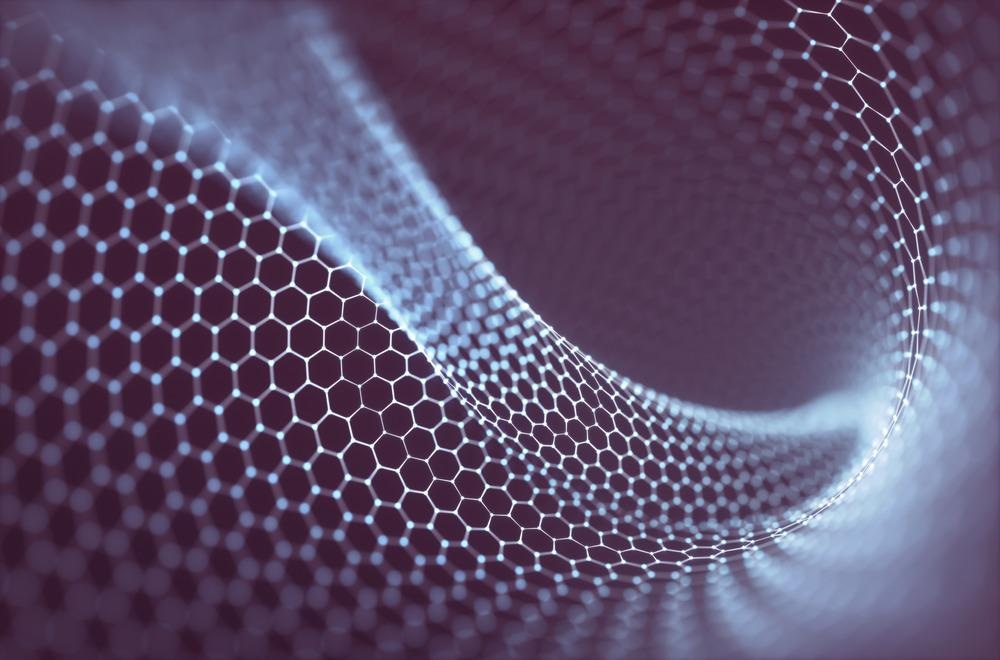In a recent study published in the journal ACS Applied Nano Materials, researchers developed a novel technique for automatically classifying the Raman spectra of twisted bilayer graphene (tBLG) into a variety of twist orientations using machine learning (ML).

Study: Machine Learning Determination of the Twist Angle of Bilayer Graphene by Raman Spectroscopy: Implications for van der Waals Heterostructures. Image Credit: ktsdesign/Shutterstock.com
With the recent surge in demand in tBLG, rapid, efficient, and non-destructive techniques for accurately determining the twist angle are needed.
Given the vast quantity of information on all aspects of the graphene recorded in its Raman spectrum, Raman spectroscopy might offer such a methodology. However, the angle determination can be difficult due to small variations in the Spectral data caused by the stacking sequence.
Limitations of Current Angle Determination Methods
In recent decades, the discovery of highly conductive phases at tiny twist orientations has prompted interest in twisted bilayer graphene (tBLG) research. However, estimating the twist angle of tBLG layers is difficult.
The most precise angle measurements are obtained using high-resolution imaging methods, such as transmission electron microscopy (TEM) or scanning probe microscopy (SPM).
The disadvantage is that observations take time and require either a free-standing material or one that is mounted on a current collector. Furthermore, they give highly localized features on sub-micron-sized locations, while the twist degree might change by several micrometers.
As a result, these approaches are inappropriate for real applications that need large-area categorizations on unpredictable materials in a short time.
Raman Spectroscopy for tBLG
Raman spectroscopy is a non-invasive examination method that allows for a variety of substrates and environments to be used for measurements, as well as the ability to analyze relatively vast regions in a small amount of time.
It has also been extensively employed in graphene characterization, offering a wealth of data about the material's properties, purity, and electrical configuration.
In the case of tBLG, the twist orientation may also be determined using spectroscopic methods, which can provide sub-degree accuracy for specific angle regions.
In particular, calculating the twist angle necessitates an evaluation of numerous Raman spectra components at the same time. However, the growing complexity of the spectrum might make this process much more challenging.
This intricacy is most noticeable at low twist orientations when the tBLG experiences a structural rebuilding.
Although the Raman spectrum includes data on the angular position of tBLG, the differences for various angles can be every minute, including small alterations in the locations, breadth, and intensity ratios of the various peaks.
These distinctions are sometimes undetectable at first sight and may be easily ignored, necessitating a thorough examination of the spectrum.
A Novel ML-Based Method for tBLG Fabrication
Machine learning (ML) is a set of approaches that use mathematics to classify new information depending on a model's learning or recognize trends in uncategorized data (unsupervised ML).
ML-based approaches are being prepared and implemented in many parts of 2D material study and processing. ML has lately been shown to be useful in identifying the twist angle of simulated Raman spectrum parts. ML was also utilized to detect certain twist angles of BLG created by synthetic single-layer graphene stacks.
To estimate the layering sequence of tBLG from its absorption spectra, the researchers created a simple, rapid, and low computationally intensive ML-based analytical technique in this study. This approach entails gathering enough data from the tBLG Raman spectra to build an ML model capable of inferring the twist angle within prescribed ranges.
Conclusions and Prospects
Compared to manual twist angle labeling, the suggested approach achieves a precision of over 99 percent. Furthermore, the approach is computationally light, delivering forecasts for whole Raman mapping, including dozens of wavelengths in a matter of a few seconds on even the most basic desktop machines.
Finally, the suggested method's versatility allows it to be expanded to measure the amount of strain and loading in graphene and the adjustment factor of other thin films and heterostacks.
The suggested approach might also be used to investigate the twist orientations of various vdW nanostructured materials, making it a valuable and straightforward analytical tool with real-world applications for the current level of understanding of twistronics.
Continue reading: How Graphene was Found in 4.5 Billion-Year-Old Meteorites.
Reference
Solís-Fernández, P. et al. (2022). Machine Learning Determination of the Twist Angle of Bilayer Graphene by Raman Spectroscopy: Implications for van der Waals Heterostructures. ACS Applied Nano Materials. Available at: https://pubs.acs.org/doi/10.1021/acsanm.1c03928
Disclaimer: The views expressed here are those of the author expressed in their private capacity and do not necessarily represent the views of AZoM.com Limited T/A AZoNetwork the owner and operator of this website. This disclaimer forms part of the Terms and conditions of use of this website.